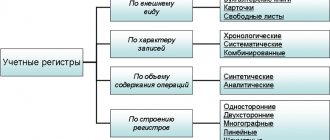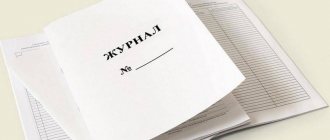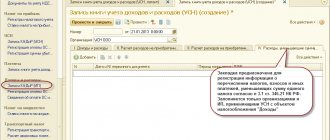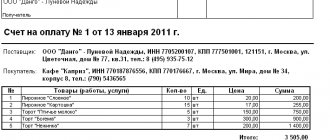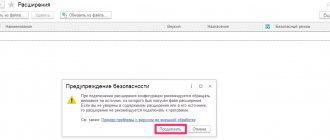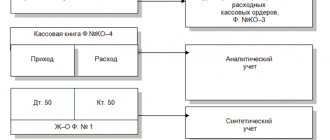What is the General Ledger in Accounting? A good accountant is half the success and prosperity of a company. As a business executive, an accountant keeps records and reports of all business transactions, expenses, and income of the company. Nothing is disposed of or acquired without the knowledge of the accountant. It is he who is obliged to report to the manager and founders for every coin spent and earned. By putting his signature on financial reports, the chief accountant bears criminal liability on an equal basis with the manager.
General ledger in accounting: sample filling
The form of the general ledger is approved by business entities in their accounting policies. In accordance with Art. of the Law on Accounting dated December 6, 2011 No. 402-FZ, each enterprise independently develops templates for accounting register forms (with the exception of public sector organizations). The structure of the document must contain the following data:
- name of the accounting register;
- name of the company on behalf of which the register is compiled;
- dates of opening and closing of the register, designation of the period for which the results are summed up;
- grouping of accounting objects with reference to the chronology of events;
- units of measurement and size of cost parameters;
- an indication of the positions of the persons responsible for maintaining the general ledger, a place to decipher the names of these employees.
The document can be issued on paper or electronically. When maintaining records using accounting programs, the general ledger is generated automatically. The accuracy of the information entered must be confirmed with the handwritten signatures of responsible specialists. Corrections in the paper register are permitted, but provided that the date of the amendments is indicated and the person who made the adjustment is identified.
The general ledger in accounting, filling it out, is necessary to systematize the entire complex of business transactions carried out by the enterprise during the reporting year. This document allows you to obtain summarized information about the results of activities, which is important when preparing reports. From the general ledger, the accountant can transfer data on the opening and closing balances for any of the accounting accounts to the balance sheet. An additional function of the register is to independently verify the correctness of accounting.
Content
Forms and standards for filling out the General Ledger:
- Document title: “General Ledger.”
- Legal name of the company.
- The reporting year when the General Ledger was opened.
- Signatures, surnames, initials and other data of officials.
- Accounting information, its restoration in case of loss.
- Monetary measurements by objects.
- Current account, cash register, accounting objects.
The general ledger is filled out according to the rules for documents of this type of case. After all, an experienced accountant knows how to manage them, his area of work.
General ledger structure
Each account has a separate page in the general ledger. The debit turnover on the account is indicated broken down by corresponding accounts, and the credit turnover is transferred without breakdown - the total amount for the month (these data are reflected in detail in the order journal of the corresponding account).
When filling out the general ledger, information is reflected only for synthetic accounts without breakdown into subaccounts. Analytics is recorded in other order journals, the task of the general ledger is to summarize the data.
For example, in the reporting month there is data on accrued and paid taxes:
- from the income of individuals (account 68/NDFL);
- for added value (invoice 68/VAT);
- income tax (account 68/NNP).
In accounting, they are reflected in account 68, but separately from each other in different subaccounts. In the general ledger, turnover for all specified taxes will take place in one line of account 68. Detailing by dates of accrual and payment, by type of tax obligations is reflected not in the general ledger, but in the corresponding register.
The opening balances reflected in the book at the beginning of the year must coincide with the turnover indicators at the end of the previous year. The balance at the end of the period indicated in the general ledger must be identical to the data in the balance sheet for the reporting period in question. In the general ledger, it is recommended to indicate the number of accounting registers (order journals) from which account data was transferred.
Sample of filling out a sheet of the general ledger for account 50:
Financial discipline
The General Ledger indicates all the primary documents where the financial transaction of the company’s affairs was reflected, for example, an invoice, cash receipts and expenses, as well as data recovery (if necessary).
This document verifies the financial and cash discipline of the organization's affairs. An entrepreneur needs a general ledger; through it, one can identify financial problems, understand errors when filling out documents, taking into account the forms of its maintenance and restoration in case of data loss.
Fuel purchase
Particular attention should be paid to the purchase of fuels and lubricants, its accounting and balance. Moreover, fuels and lubricants are purchased in cash or by bank transfer. In the first option, fuel and lubricants are purchased by accountable persons, for example, drivers or the transport department. To do this, accountants need a nomenclature, that is, a list of persons who have the right to receive cash, have a cash register for reporting, and to purchase fuel and lubricants. When purchasing fuel, drivers need to show primary documents.
This provision requires that the documents must clearly indicate the name of gasoline, prices, number of liters, and the current account through which the transactions were carried out. Transactions are important when maintaining the General Ledger, especially when posting balances. The amount of money issued to drivers for the purchase of fuel and lubricants is negotiated with the head of the enterprise. When filling out documents, the main thing is to get an advance report from an accountant, taking into account fuel and lubricants.
According to experts, errors in accounting for fuel and lubricant transactions are possible when the money purchased for gasoline is written off in cash, since the amounts for expenses are overstated.
And with non-cash payments, when the invoice is issued by the company, accounting is not difficult.
Therefore, many companies do not approve of cash and ask for an invoice when ordering fuel, which is reviewed, for example, by the transport department.
How to fill out a ledger at an enterprise yourself: 12 rules
› › › A good accountant is half the success and prosperity of a company.
As a business executive, an accountant keeps records and reports of all business transactions, expenses, and income of the company. Nothing is disposed of or acquired without the knowledge of the accountant. It is he who is obliged to report to the manager and founders for every coin spent and earned. By putting his signature on financial reports, the chief accountant bears criminal liability on an equal basis with the manager. Contents Among the variety of journals on business transactions, accounting, reports, reports and other documents required to be filled out at the enterprise, there is also the main book of accounting - this is the Ledger. Translated from German means "Big" or "Chief Ledger". It is a journal that contains the main summary data for all accounting reports and statements.
In other words, the ledger is the main systematic register of synthetic accounting. The golden rule of accounting - nothing comes from nowhere and does not disappear anywhere is reflected in business transactions. Until the recent past, all accounting was done manually. A lot of it contained information about the movement of funds, materials, personnel and absolutely everything that happens at the enterprise in value terms and in processes.
Nowadays, accounting records and reports, as well as some journals on operations, exist in electronic form in the 1C program - production, accounting, warehouse.
But many more experienced accountants still duplicate information in writing.
Basic documents on this type
However, despite the fact that an invoice was issued or a cash payment was made, the main thing when accounting for fuel and lubricants remains the presence of a driver’s waybill, which contains basic information about the car.
The company should take into account that when an invoice is issued, all transactions, except for the above documents, must be confirmed by plastic cards. When maintaining accounting records, it is important to take into account that primary documents are important for debit, as well as the department for which these transactions are important. Often in large companies the transport department has influence on this issue.
In this case, a materially responsible person is appointed to carry out all operations, including on the basis of expenditure data.
Based on these data, including primary documents, accounting is maintained. Here are the basic rules on how to properly maintain a general ledger.
Identity of information prohibition of corrections
Financial reporting forms, information on numbers in all documents must be identical everywhere. Corrections are not allowed in the General Ledger; the restoration of the truth in the numbers must be correct. And here, ignorance of how to properly maintain these documents will not save you from liability.
Fortunately, today the General Ledger is compiled in two versions: electronic and paper. In the first case, programs are used to automate financial balance sheet accounting, which simplifies the process for organizing accounting and in case it becomes necessary to restore data in case of loss (this happens). Moreover, entries in the General Ledger must be kept correctly.
Accounting department and information on documents
Accounting in production must be maintained properly.
Typically, large enterprises have an accounting and finance department.
At the same time, an experienced accountant should know: what is the main nomenclature for carrying out their activities, unified documents, forms and inspection reports for regulatory authorities, which are drawn up by them. Unified documents are usually published on the official web resources of the relevant companies.
The principle of drawing up these provisions is as follows: after the planned events of state supervision, unified documents are approved that are binding. Unified forms are approved by a resolution of the State Committee of Russia.
Score 62
The list of documents, the nomenclature of production activities and the correctness of calculations are important. The further development of the enterprise depends on this. In accounting, the greatest attention should be paid to account 62. Settlements according to account 62 are credited, taking into account funds and the amount of payments received.
Debit entries are made regarding accounts 51, 52 and 62. Analytics accounting according to account 62 is carried out based on each invoice submitted by the customer. Through analytical accounting, you can obtain the necessary data on buyers and customers of enterprises. The score, of course, is 62.
From this document, you can indirectly see the economic life of the seller, according to which account 62 occurs. Account 62 shows the debt when paying in advance or by bills. Debit 62 is written out along with credit 90.1, 90.2.
Unified agricultural tax
The income and expense accounting book for individual entrepreneurs on the Unified Agricultural Tax includes:
- Title page with payer information.
- Section I. Income and expenses. Information is provided for the first and second half of the year.
- Section II. Expenses for the acquisition of fixed assets and intangible assets, which reduce the tax base.
The form of the main section of KUDiR for individual entrepreneurs on the Unified Agricultural Tax, which reflects income and expenses, is similar to the similar section of the Book for the simplified tax system. The only difference is that the data is grouped by six months.


